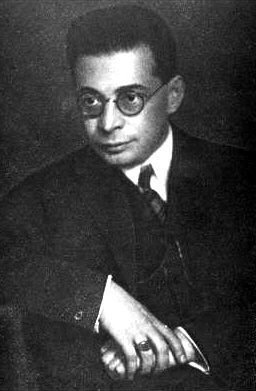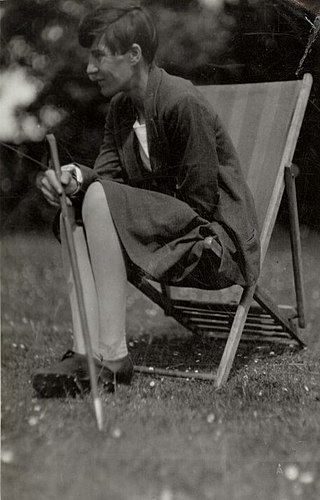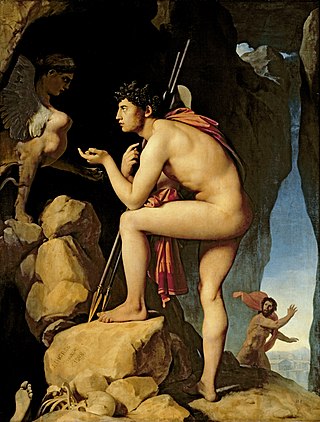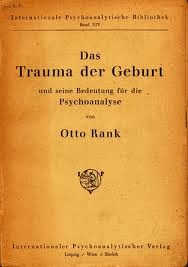Psychoanalysis is a theory and field of research developed by Sigmund Freud. It describes the human mind as an apparatus that emerged along the path of evolution and consists mainly of three functionally interlocking instances: a set of innate needs, a consciousness to satisfy them by ruling the muscular apparatus, and a memory for storing experiences that arises during this. Furthermore the theory includes insights into the effects of traumatic education and a technique for bringing repressed content back into the consciousness, in particular the diagnostic interpretation of dreams. Overall, psychoanalysis is a method for the examination and treatment of mental disorders.

Sigmund Freud was an Austrian neurologist and the founder of psychoanalysis, a clinical method for evaluating and treating pathologies seen as originating from conflicts in the psyche, through dialogue between patient and psychoanalyst, and the distinctive theory of mind and human agency derived from it.

Sándor Ferenczi was a Hungarian psychoanalyst, a key theorist of the psychoanalytic school and a close associate of Sigmund Freud.

Otto Rank was an Austrian psychoanalyst, writer, and philosopher. Born in Vienna, he was one of Sigmund Freud's closest colleagues for 20 years, a prolific writer on psychoanalytic themes, editor of the two leading analytic journals of the era, including Internationale Zeitschrift für Psychoanalyse, managing director of Freud's publishing house, and a creative theorist and therapist. In 1926, Rank left Vienna for Paris and, for the remainder of his life, led a successful career as a lecturer, writer, and therapist in France and the United States.
Prenatal and perinatal psychology explores the psychological and psychophysiological effects and implications of the earliest experiences of the individual, before birth, prenatal, as well as during and immediately after childbirth, perinatal. Prenatal and perinatal psychology can be seen as a part of developmental psychology, although historically it was developed in the heterogenous field of psychoanalysis. Prenatal and perinatal psychology are often discussed together to group the period during pregnancy, childbirth, and through the early stages of infancy. The role of prenatal and perinatal psychology is to explain the experience and behavior of the individual before birth, postnatal consequences, and the lasting effects on development that occur during this time period.

The Interpretation of Dreams is an 1899 book by Sigmund Freud, the founder of psychoanalysis, in which the author introduces his theory of the unconscious with respect to dream interpretation, and discusses what would later become the theory of the Oedipus complex. Freud revised the book at least eight times and, in the third edition, added an extensive section which treated dream symbolism very literally, following the influence of Wilhelm Stekel. Freud said of this work, "Insight such as this falls to one's lot but once in a lifetime."
Repression is a key concept of psychoanalysis, where it is understood as a defense mechanism that "ensures that what is unacceptable to the conscious mind, and would if recalled arouse anxiety, is prevented from entering into it." According to psychoanalytic theory, repression plays a major role in many mental illnesses, and in the psyche of the average person.

Karl Abraham was an influential German psychoanalyst, and a collaborator of Sigmund Freud, who called him his 'best pupil'.

Helene Deutsch was a Polish-American psychoanalyst and colleague of Sigmund Freud. She founded the Vienna Psychoanalytic Institute. In 1935, she immigrated to Cambridge, Massachusetts, where she maintained a practice. Deutsch was one of the first psychoanalysts to specialize in women. She was a Fellow of the American Academy of Arts and Sciences.
The International Psychoanalytical Association (IPA) is an association including 12,000 psychoanalysts as members and works with 70 constituent organizations. It was founded in 1910 by Sigmund Freud, from an idea proposed by Sándor Ferenczi.

Sergei Konstantinovitch Pankejeff was a Russian aristocrat from Odesa, Russian Empire. Pankejeff is best known for being a patient of Sigmund Freud, who gave him the pseudonym of Wolf Man to protect his identity, after a dream Pankejeff had of a tree full of white wolves.

Alix Strachey was an American-born British psychoanalyst and, with her husband, the translator into English of The Standard Edition of the Complete Psychological Works of Sigmund Freud.

In classical psychoanalytic theory, the Oedipus complex refers to a son's sexual attitude towards his mother and concomitant hostility toward his father, first formed during the phallic stage of psychosexual development. A daughter's attitude of desire for her father and hostility toward her mother is referred to as the feminine Oedipus complex. The general concept was considered by Sigmund Freud in The Interpretation of Dreams (1899), although the term itself was introduced in his paper A Special Type of Choice of Object made by Men (1910).
Sandor Rado was a Hungarian psychoanalyst of the second generation, who moved to the United States in the 1930s.

Why Freud Was Wrong: Sin, Science and Psychoanalysis is a book by Richard Webster, in which the author provides a critique of Sigmund Freud and psychoanalysis, and attempts to develop his own theory of human nature. Webster argues that Freud became a kind of Messiah and that psychoanalysis is a pseudoscience and a disguised continuation of the Judaeo-Christian tradition. Webster endorses Gilbert Ryle's arguments against mentalist philosophies in The Concept of Mind (1949), and criticizes many other authors for their treatment of Freud and psychoanalysis.

The Assault on Truth: Freud's Suppression of the Seduction Theory is a book by the former psychoanalyst Jeffrey Moussaieff Masson, in which the author argues that Sigmund Freud, the founder of psychoanalysis, deliberately suppressed his early hypothesis, known as the seduction theory, that hysteria is caused by sexual abuse during infancy, because he refused to believe that children are the victims of sexual violence and abuse within their own families. Masson reached this conclusion while he had access to several of Freud's unpublished letters as projects director of the Sigmund Freud Archives. The Assault on Truth was first published in 1984 by Farrar, Straus and Giroux; several revised editions have since been published.

Freud and Philosophy: An Essay on Interpretation is a 1965 book about Sigmund Freud, the founder of psychoanalysis, written by the French philosopher Paul Ricœur. In Freud and Philosophy, Ricœur interprets Freudian work in terms of hermeneutics, a theory that governs the interpretation of a particular text, and phenomenology, a school of philosophy founded by Edmund Husserl. Ricœur addresses questions such as the nature of interpretation in psychoanalysis, the understanding of human nature and the relationship between Freud's interpretation of culture amongst other interpretations. The book was first published in France by Éditions du Seuil, and in the United States by Yale University Press.

The Memory Wars: Freud's Legacy in Dispute is a 1995 book that reprints articles by the critic Frederick Crews critical of Sigmund Freud, the founder of psychoanalysis, and recovered-memory therapy. It also reprints letters from Harold P. Blum, Marcia Cavell, Morris Eagle, Matthew Erdelyi, Allen Esterson, Robert R. Holt, James Hopkins, Lester Luborsky, David D. Olds, Mortimer Ostow, Bernard L. Pacella, Herbert S. Peyser, Charlotte Krause Prozan, Theresa Reid, James L. Rice, Jean Schimek, and Marian Tolpin.

Freud: A Life for Our Time is a 1988 biography of Sigmund Freud, the founder of psychoanalysis, by the historian Peter Gay. The book was first published in the United Kingdom by J. M. Dent & Sons Ltd. The book has been praised by some commentators and compared to the psychoanalyst Ernest Jones's The Life and Work of Sigmund Freud (1953–1957). However, it has been criticized by authors skeptical of psychoanalysis, who have accused Gay of lacking objectivity and of repeating incorrect claims about Freud's work.

The Life and Work of Sigmund Freud is a biography of Sigmund Freud, the founder of psychoanalysis, by the psychoanalyst Ernest Jones. The most famous and influential biography of Freud, the work was originally published in three volumes by Hogarth Press; a one-volume edition abridged by literary critics Lionel Trilling and Steven Marcus followed in 1961. When first published, The Life and Work of Sigmund Freud was acclaimed, and sales exceeded expectations. Although the biography has retained its status as a classic, Jones has been criticized for presenting an overly favorable image of Freud. Jones has also been criticized for being biased in his treatment of rival psychoanalysts such as Otto Rank and Sándor Ferenczi.














